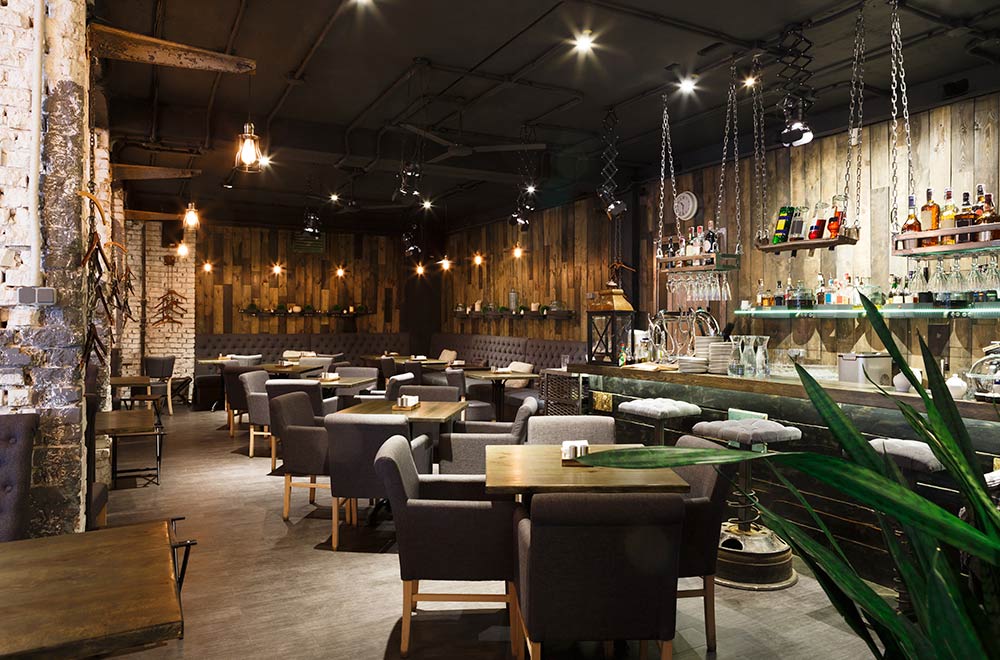Pan Asian Dining Islamabad: Appreciate Authentic Asian Meals
Pan Asian Dining Islamabad: Appreciate Authentic Asian Meals
Blog Article
Savor Genuine Oriental Cuisine With a Pan-Asian Twist for a Cooking Adventure
Embarking on a culinary trip via genuine Eastern cuisine, improved with a Pan-Asian twist, provides an one-of-a-kind opportunity to discover the rich tapestry of tastes that specify the region's diverse culinary customs. As you ponder these enticing recipes, take into consideration the social stories and historical influences that shape them, each bite offering a tale waiting to be found. Romantic restaurants Islamabad.

Discovering Pan-Asian Flavors
In the world of international gastronomy, Pan-Asian cuisine attracts attention for its exceptional variety and the harmonious interaction of tastes from numerous Eastern cultures. This culinary method commemorates the special components and rich customs located throughout the continent, producing a tapestry of preferences that is both rewarding and interesting. Secret to Pan-Asian food is its capability to stabilize contrasting flavors-- sweet, salty, spicy, and sour-- while highlighting the quality and quality of each component.
From the umami-rich soy sauce of Japan to the fiery chili peppers of Thailand, Pan-Asian food offers a comprehensive palette of tastes. These aspects are often combined in inventive ways, boosting recipes with layers of complexity. For instance, making use of great smelling natural herbs such as lemongrass and cilantro, typical in Vietnamese and Thai food, includes a refreshing brightness to recipes, while the unification of coconut milk provides a luscious, abundant structure.
The focus on fresh produce and aromatic spices makes sure that each meal is not only a feast for the preference buds however additionally for the senses. Pan-Asian food invites diners to start a culinary journey, exploring the huge and differed landscapes of Oriental gastronomy with every bite.
Blend Recipes to Attempt
While Pan-Asian food is celebrated for its conventional flavors, the modern-day culinary landscape is increasingly accepting combination dishes that mix these traditional components with influences from various other regions. This innovative strategy not only honors the abundant heritage of Eastern cooking arts but likewise introduces unique taste experiences that attract modern tastes buds.
A prime instance of such a blend recipe is the Korean-Mexican taco, where marinated bulgogi beef is covered in a warm tortilla, topped with kimchi and a hot gochujang-infused salsa. This combination marries the strong, full-flavored tastes of Korea with the vivid, fresh elements of Mexican food. Likewise, sushi burritos have actually gained popularity, joining together the delicate virtuosity of Japanese sushi with the hearty, hand-held comfort of a burrito, usually featuring combination components like tempura shrimp and avocado with a drizzle of wasabi mayo.
One more notable meal is Thai curry ramen, which instills the luscious, fragrant flavors of Thai curry into the comforting brew of conventional Japanese ramen, producing an unified blend that entices the detects. These combination meals extend past simple novelty; they stand for a cooking discussion in between cultures, encouraging exploration and technology on the planet of Pan-Asian food.
Crucial Components and Seasonings
To genuinely value Pan-Asian cuisine, one must understand the vital components and seasonings that create its foundation. This diverse cooking design attracts from an abundant tapestry of Asian customs, employing a harmonious mix of flavors and structures. Key components consist of soy sauce, fish sauce, and oyster sauce, which pass on a savory umami deepness important to Asian meals. Complementary to these are rice vinegar and mirin, providing a delicate level of acidity and sweet taste.
Aromatic components are crucial, with ginger, garlic, and lemongrass being ubiquitous throughout various Pan-Asian recipes. These active ingredients give a great smelling base that enhances the soul food intricacy of flavors. Flavors such as star anise, cardamom, and cinnamon present heat and character, resembling influences from regions like China and India.

Cooking Techniques and Tips
Mastering the art of Pan-Asian food calls for experience with its unique food preparation methods, each adding to the vibrant tapestry of tastes this culinary practice is celebrated for. Central to these approaches is the stir-fry, a quick food preparation method that maintains the dietary honesty and brilliant shades of ingredients. Using a frying pan, the stir-fry technique enables even warmth circulation, essential for accomplishing the particular appearance and taste balance of Pan-Asian recipes.
An additional fundamental technique is steaming, specifically common in Chinese food. This mild approach preserves the natural flavors and nutrients of components, making it excellent for fish and shellfish and vegetables. Dumplings, a precious staple, often profit from steaming, resulting in soft, delicious structures.
Barbecuing, also important, presents great smoky midsts to meals such as Oriental bulgogi or Japanese yakitori (Fine dining experience Islamabad). This technique often includes marinading active ingredients, allowing flavors to pass through deeply before food preparation over an open fire or warm plate
Last but not least, mastering the art of balancing tastes-- wonderful, sour, salty, bitter, and umami-- is important. Appropriately layering these components can boost a recipe from common to remarkable, using a complicated and pleasing cooking experience that personifies the significance of Pan-Asian cuisine.
Dining Experiences Worldwide
Across the globe, Pan-Asian food supplies an unmatched eating experience, celebrated for its rich tapestry of flavors and dynamic presentations. This cooking phenomenon has actually gone beyond social boundaries, recording the hearts and tastes of food enthusiasts worldwide. In cosmopolitan cities like New York, London, and Sydney, Pan-Asian restaurants function as fusions where culinary traditions from Thailand, Japan, China, and beyond converge, giving diners with a diverse mix of dishes that highlight the region's diversity.
The global allure of Pan-Asian cuisine depends on its capacity to provide both credibility and innovation. Chefs masterfully wed conventional components such as lemongrass, soy sauce, and miso with contemporary techniques, resulting in recipes that are both refreshingly brand-new and acquainted. This fusion permits restaurants to start a culinary journey that appreciates heritage while embracing modernity.
Furthermore, dining experiences are boosted through thoughtfully created settings that show the values of Pan-Asian aesthetics. From see this website minimal Japanese-inspired interiors to lively Thai-themed spaces, each dining establishment supplies a special atmosphere that enhances the cooking offerings. As a result, patrons are not simply consuming a meal but partaking in a social experience, making Pan-Asian dining a really international phenomenon.
Final Thought
The exploration of Pan-Asian food provides an extensive understanding of the complex interaction of tastes and culinary practices throughout Asia. By accepting combination dishes such as Thai curry ramen and sushi burritos, the culinary journey not only highlights the adaptability of standard ingredients but also showcases innovative modern-day techniques. This gastronomic adventure, enriched by vital flavors and cooking techniques, supplies a special opportunity to appreciate the visit cultural diversity and cooking creativity that define Pan-Asian cuisine on an international range.
Beginning on a culinary trip via genuine Eastern food, boosted with a Pan-Asian twist, offers an unique opportunity to explore the rich tapestry of tastes that define the area's diverse cooking traditions.In the realm of global gastronomy, Pan-Asian food stands out for its amazing variety and the unified interplay of tastes from various Oriental cultures. Trick to Pan-Asian food is its capability to stabilize different tastes-- pleasant, salty, spicy, and sour-- while highlighting the quality and top quality of each ingredient.

Report this page